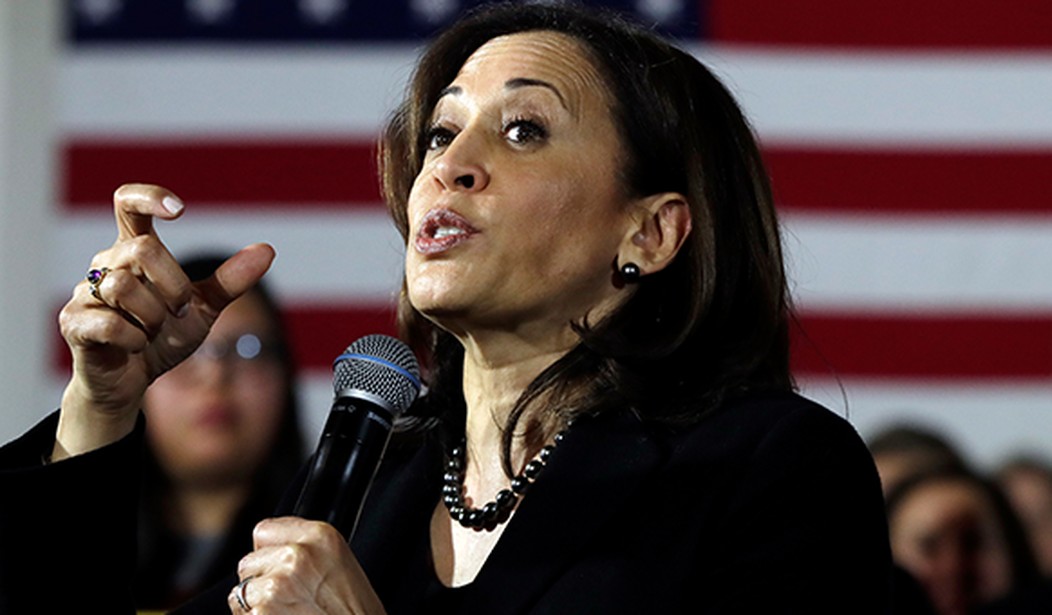Having endorsed Alexandria Ocasio Cortez's $93 trillion 'Green New Deal' fantasy and embraced the elimination of private insurance (as AOC has), Kamala Harris is once again following in the House freshman's radical footsteps. Speaking at a campaign event in South Carolina, Harris ridiculed people who say the US economy is in strong shape. There are a few problems with her message in this clip:
Sen. Kamala Harris (D-CA) wrongly thinks that the unemployment rate is low because people work multiple jobs.
— Steve Guest (@SteveGuest) March 9, 2019
When @AOC made a similar statement, Politifact rated it “Pants On Fire.”
pic.twitter.com/1up4LuDsOd
First, I'm not sure many economists or Republicans cite the stock market as the top indicator of economic health, despite her initial straw man claim. There are many other metrics that are more indicative and more helpful to building that argument, which we'll mention in a moment. But it's also worth pointing out that a robust stock market is not merely good news for people who own stocks, as Harris sarcastically says. Plenty of workers' benefit and retirement funds, including those of many public sector employees, are tied into the performance of the stock market -- so it's not just investors who benefit when markets are humming along, and it's not just investors who feel pain when markets sustain hits.
Second, in her attempt to downplay the impressive, stable and low US unemployment rate, Harris recycles a claim for which AOC was slapped down by fact-checkers a few months ago. Even left-leaning Politifact assigned her a "pants on fire" rating. Harris' spin is less explicitly clumsy and wrong than AOC's, as she didn't specifically state that the low rate is directly attributable to people working more than one job, which makes absolutely no sense -- but she does use this argument to undercut the (compelling) argument that the economy is in good shape because so many Americans are employed. While it's certainly true that a substantial number of people are working multiple jobs in order to make ends meet, it's not accurate to pretend that this phenomenon is sufficiently widespread as to justify Harris' talking point. Some numbers from this summer:
Recommended
The latest employment numbers are from the June jobs report. They show that only 4.8 percent of employed Americans hold multiple jobs. That’s lower than before the Great Recession and lower than during the 1990s boom. Indeed, that number has been declining for years.
The February jobs report found that just five percent of the employed population is working more than one job, down from 5.2 percent one year ago. The experiences of the people who constitute that five percent matter, of course, but they are not evidence of a larger trend -- and certainly not a trend that represents a real basis to shrug off the historically-low unemployment rate. The jobs report that came out on Friday was a major 'miss' on a key number, with the US economy adding only 20,000 jobs last month; economists were expecting 180,000. That's a potentially concerning data point, underscoring the folly of simply assuming that the current prosperity streak will continue unabated. But there were positive statistics, too. The previous two months' job creation data was revised upward by 12,000, and the overall unemployment rate fell to 3.8 percent. That marks 12 consecutive months, a full year, with the U3 figure at or below four percent, which is unambiguously good. Not only that, heretofore discouraged people have re-entered the workforce, with the participation rate continuing at a stable and strong clip:
The growth in America’s workforce — made up of people either working or looking for work — has helped reverse an alarming consequence of the recession: The exit of millions of Americans from the job market.https://t.co/G096V4mwvP
— STEW ?????? ?? (@StewSays) March 7, 2019
A surprisingly strong burst of job growth over the past year has led many economists to wonder: Where are all the workers coming from? As recently as last spring, analysts had worried that hiring would slow as the pool of unemployed shrank. Many employers have complained for years that they could no longer find enough people to fill their open jobs. Turns out they were both wrong. The pace of hiring in 2018 was the most robust in three years, and for a surprising reason: Many more people have decided to look for work than experts had expected. The influx of those job seekers, if sustained, could help extend an economic expansion that is already the second-longest on record.
Better still, Americans' wages are markedly improving:
The good news: Wages grew at 3.4% in past year -- the best since April 2009 (aka the best since the Great Recession).
— Heather Long (@byHeatherLong) March 8, 2019
Inflation is 1.6%, so we are seeing strong wage growth even after adjusting for cost of living. https://t.co/AI2IdIRl4B #jobs
Sustainability is a fair worry for the White House, but as of this moment, the most useful measuring sticks of the US economy are unemployment (3.8 percent), GDP growth (3.1 percent Q4 to Q4), and wage growth (3.4 percent). All three are impressive. Harris' snarky point, therefore, is weak.

























Join the conversation as a VIP Member